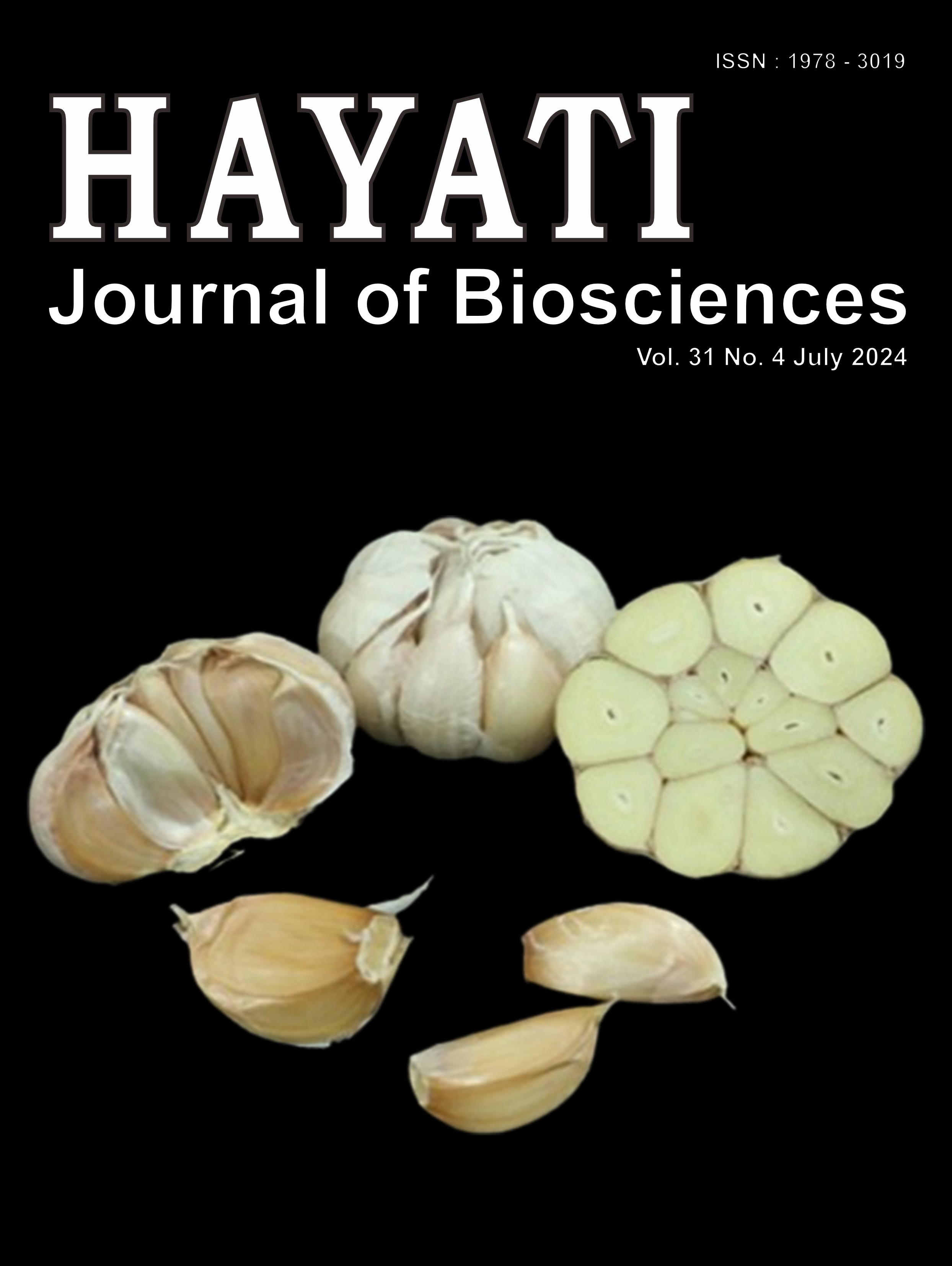Food Habits of the Common Palm Civet (Paradoxurus hermaphroditus) in Pangandaran Nature Reserve, West Java, Indonesia: a Preliminary Report
Abstract
We conducted a preliminary survey of the wild common palm civet Paradoxurus hermaphroditus in a secondary forest in Pangandaran Nature Reserve, West Java, Indonesia. We collected 125 fresh fecal samples between October 2018 and August 2019. We conducted faecal analyses after species confirmation by camera trapping and faecal DNA analysis. Almost all faeces contained fruits and seeds (frequency of occurrence: 97.6%), while the percentage of animal matter (including mammals, birds, insects, non-insect arthropods, and molluscs) was much lower (22.4%). We observed no seasonal differences in major faecal contents. Higher dependence on fruits by the common palm civets was similar to those in other study sites. Seeds of at least eight different plant species were found in the faeces of the common palm civets, which implied that the common palm civets would play roles as seed dispersal agents.
Downloads
Copyright (c) 2024 Yamato Tsuji, Takafumi Tatewaki, Achmad Farajallah, Hiroyuki Tanaka, Kanthi Arum Widayati, Bambang Suryobroto

This work is licensed under a Creative Commons Attribution-NonCommercial 4.0 International License.
HAYATI J Biosci is an open access journal and the article's license is CC-BY-NC. This license lets others distribute, remix, tweak, and build upon author's work, as long as they credit the original creation. Authors retain copyright and grant the journal/publisher non exclusive publishing rights with the work simultaneously licensed under a https://creativecommons.org/


















.png) IPB University
IPB University Department of Biology
Department of Biology The Indonesian Biological Society
The Indonesian Biological Society 

